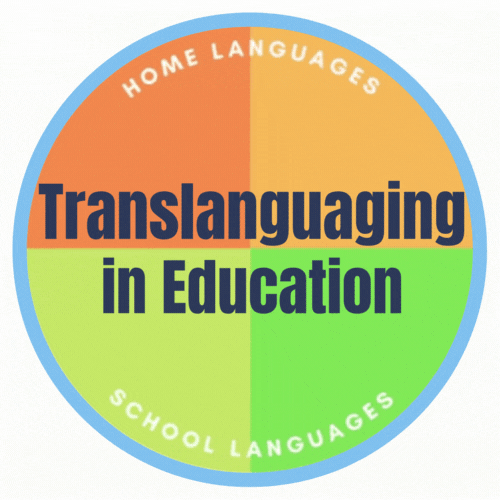Two Versions of Translanguaging

Fast Spinning Version of Translanguaging
-
Bilinguals do not speak languages.
-
They don't care about language boundaries as the language boundaries are invisible on the fast spinning top.
-
They rather select various linguistic features from their unitary linguistic repertoire.
-
They can best make meaning when they are using all of their linguistic repertoire.
-
Unitary Translanguaging Theory as argued by Jim Cummins (2021)
Slow Spinning Version of Translanguaging
-
Supports named language boundaries as the boundaries are seen on the slow spinning top
-
Calls for softening these boundaries
-
For example, translation, comparison among different languages, etc.
-
Cross-linguistic Translanguaging Theory (Jim Cummins, 2021)

Benefit of having fast spinning version of translanguaging
for multilingual students
The teachers with the fast spinning version of translanguaging can design a wider range of the translanguaging strategies and activities that fall from the fast spinning top, via slow spinning top, to the static top while those with the slow spinning top version of translanguaging can think of the translanguaging strategies and activities that occur only between the slow spinning top and the static top. Those with the fast spinning version of translanguaging can include whatever strategies and activities that those with the weak version can design, go beyond their limitation in their thinking, and design the classroom where students can leverage their full language resources.
While those teachers with the slow spinning version will still suppress students' freedom for utilizing all of their language resources, those with the fast spinning version will always think of how students can show their true knowledge and ability by utilizing any of their linguistic features freely selected from any named language they own. Those with the slow spinning version, for example, can only think of using a language separately with some borrowing allowed, use students' home language(s) just to clarify the unclear part of their teaching in a school language, translation, or comparison between languages.
The teachers with the fast spinning version can provide the various opportunities for their students to process the content utilizing their whole language resources simultaneously in addition to what the teachers with the slow spinning version can do. So it is always more beneficial for students if the teachers have the fast spinning version of translanguaging.
